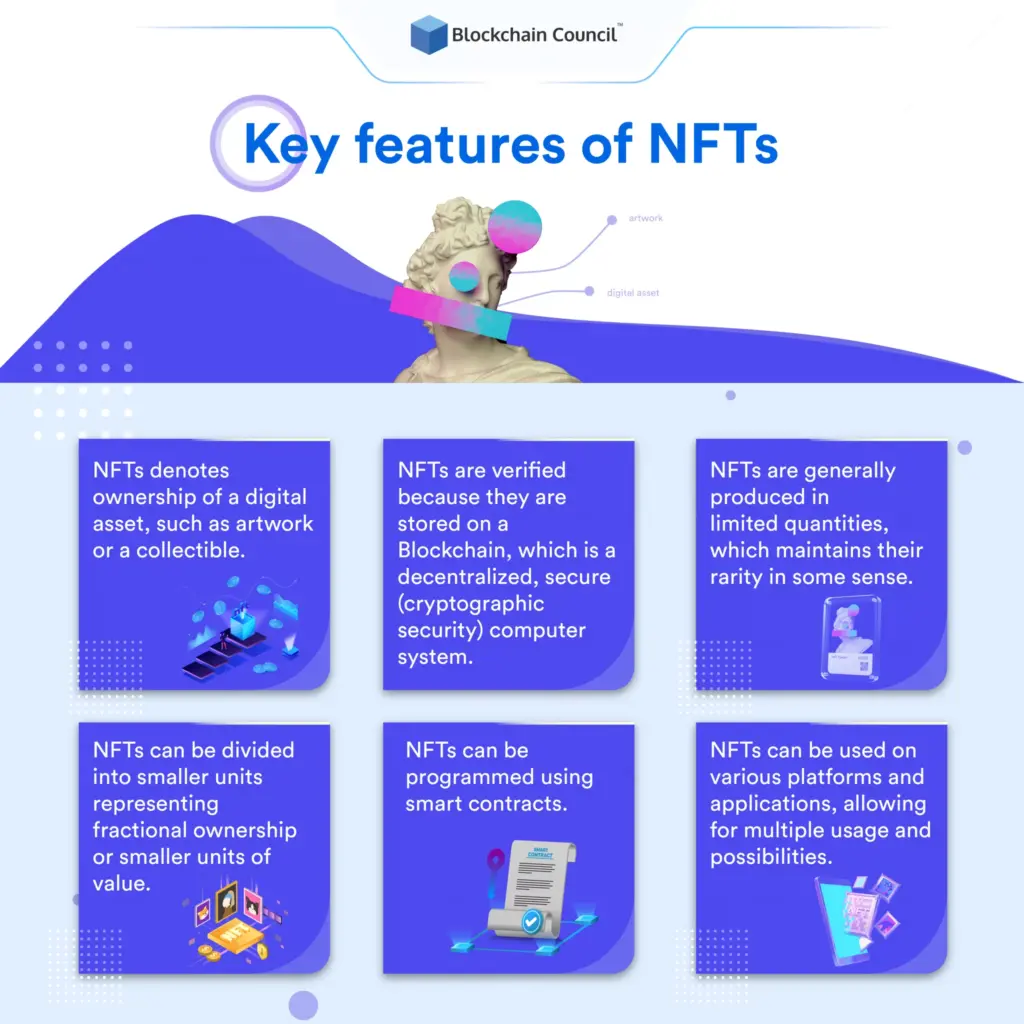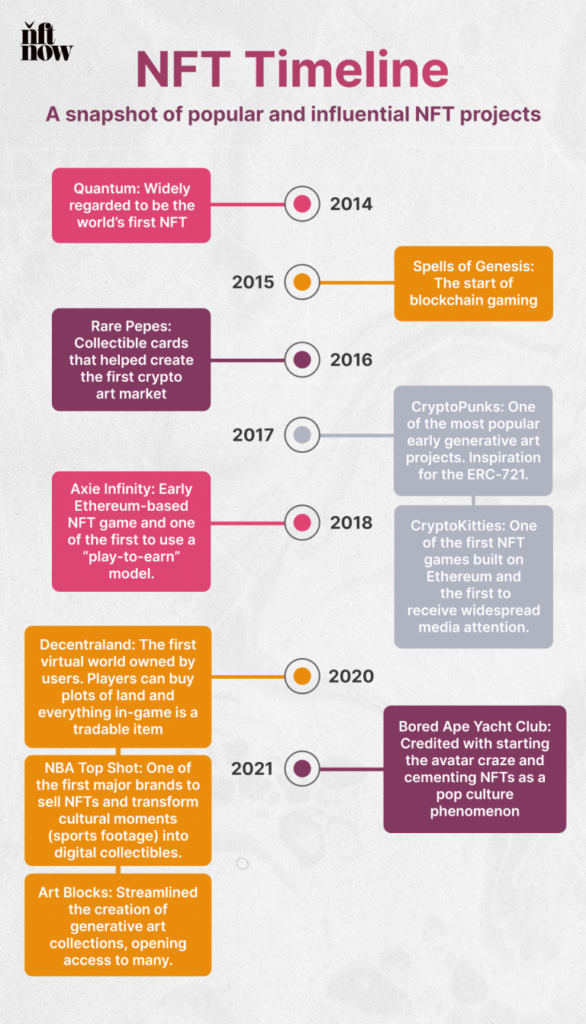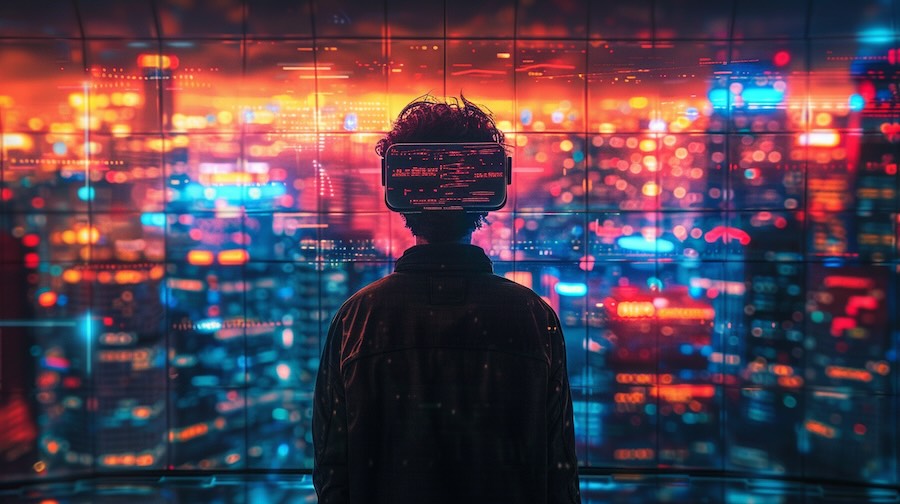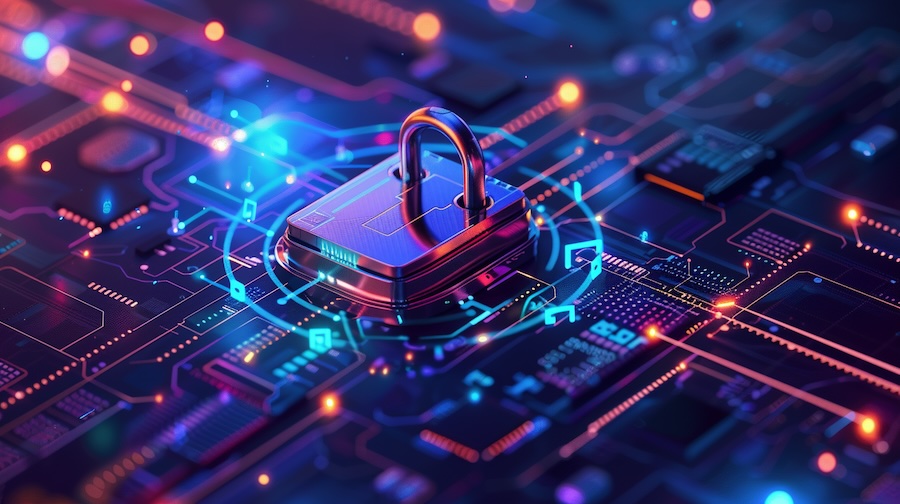We created this blog post for the EU-funded project “V2B: Creating NFT Opportunities on Metaverse for Art VET Trainees”, and our project reference number is 2022-1-DE02-KA210-VET-000080828. Coordinated by L4Y Learning for Youth GmbH in collaboration with Adana Cukurova Guzel Sanatlar and EMC Services Ltd, “Understanding the Concept of NFTs” is related to the training framework in the introduction post.
This module serves as a comprehensive guide to NFTs, offering a thorough understanding of these unique digital assets. Furthermore, NFTs represent a paradigm shift in the way we interact with digital content like images, videos, music, and more. They’re securely stored on blockchain technology, making them tamper-proof and truly one-of-a-kind.
We will journey through the history of NFTs, understanding their humble beginnings and witnessing their evolution in the world of blockchain technologies. You will explore how NFTs have rapidly gained prominence, setting the stage for an exciting digital revolution.
This module targets individuals interested in learning about the technology behind NFTs, including investors, artists, collectors, and blockchain enthusiasts. You can also find more blog posts in our R2 category. It is one of the posts.
Learning Objectives
- Describe the conception of NFTs and their significance in the digital asset business
- Examine the history and elaboration of NFTs, including their early perpetration in blockchain technologies
- Dissect the benefits and limitations of NFTs for generators, buyers, and collectors
- Estimate the operations of NFTs in disciplines like art, music, and gaming
Understanding NFTs
In this chapter, we’ll embark on an exploration of Non-Fungible Tokens (NFTs). You’ve likely heard of the term ‘NFT,’ but do you truly understand what lies beneath this digital phenomenon? NFT stands for ‘Non-Fungible Token,’ and as we delve into this concept, you’ll realize that it’s far more than just a digital asset. It represents a paradigm shift in how we perceive ownership, authenticity, and the value of digital items.
Let’s break it down:
The Meaning of ‘Non-Fungible’
Fungibility, in a simplified sense, means the interchangeability or replaceability of an item with another of the same kind. So, when something is ‘non-fungible,’ it’s declaring its uniqueness and irreplaceability. It’s like saying, “There’s only one of this, and it can’t be swapped for something else one-to-one.”
The Role of ‘Token’
Now, let’s add ‘Token’ to the equation. In the realm of technology, a token often denotes a digital asset. So, when we say ‘NFT,’ we’re talking about a ‘Non-Fungible Token,’ which is essentially a unique, irreplaceable digital asset.
Understanding NFTs – More Than Digital Items
The term NFT transcends mere digital assets; it signifies ownership of a digital item, such as artwork or collectibles, in a revolutionary way. Here’s what you need to know:
- Unique Ownership: NFTs provide a groundbreaking way for individuals to truly own and trade one-of-a-kind digital items. When you own an NFT, you possess a unique piece of the digital universe, and it’s yours to keep or trade.
- Rarity in Limited Quantities:
NFTs are frequently produced in restricted quantities, fostering an air of exclusivity. This scarcity enhances their appeal, echoing the idea of rare collectibles in the tangible realm. Consequently, the limited availability of NFTs plays a significant role in shaping their perceived value. - Decentralized Verification: The magic of NFTs primarily lies in their verification process. A blockchain, which is a decentralized and secure digital ledger, stores these digital assets. Notably, it’s fortified with cryptographic security measures. Consequently, this technology guarantees the authenticity and ownership of an NFT. Thus, it becomes virtually impossible to counterfeit or manipulate these tokens. This scarcity not only mirrors the concept of rare collectibles but also enhances the perceived value of NFTs.
Smart Contracts: NFTs can also be embedded with smart contracts. These are self-executing contracts written into lines of code, directly governing the terms of a buyer-seller agreement. This feature enables the automatic execution of specific actions or conditions, providing a new level of security and transparency to NFT transactions.

Historical Context of NFTs
This chapter explores the context of NFTs, including their early perpetration in blockchain technology, notable NFT systems, and their elaboration since their commencement. This chapter examines how NFTs have surfaced as a new form of digital asset power in the blockchain ecosystem.
The Dawn of NFTs
The concept of NFTs didn’t emerge overnight. It has its roots in the broader blockchain ecosystem. One significant milestone occurred in 2014 when Kevin McCoy issued the very first non-fungible token, creatively named “Quantum.” This historic event took place on the Namecoin blockchain. Quantum was not just a token; it was an animated octagon filled with a mesmerizing array of pulsating shapes.
However, the seeds of NFTs were sown even earlier, in 2012-2013, with the introduction of Bitcoin-based colored coins. These marked the beginning of the idea that would eventually lead to the creation of what we now know as NFTs.

The Ethereum Revolution
NFTs truly began to gain momentum in 2017, when the first NFT collections were launched on the Ethereum blockchain. Ethereum, with its innovative smart contract functionality, changed the game. Prior to Ethereum, trading and transferring ownership of digital assets, especially unique ones, was a complex and cumbersome process on many blockchains.
Ethereum’s smart contracts have revolutionized the field by enabling the creation, programming, storage, and trading of tokens to be seamlessly integrated into the blockchain itself. This innovation paved the way for the explosion of NFTs. Specifically, it provided a reliable, decentralized, and efficient platform for developing and exchanging these unique digital assets.
NFT Timeline

Applications of NFTs in Industries
In this chapter, firstly, we will delve into the intricate realm of Non-Fungible Tokens (NFTs) and their transformative impact on diverse industries. Subsequently, NFTs have transitioned from niche digital collectibles to a pervasive influence. They now span across various sectors, encompassing art, music, and gaming.
The Expanding Horizon of NFTs
While NFTs initially made waves in the realms of art and collectibles, their influence has rapidly expanded. This chapter will unravel the myriad applications of NFTs across different industries, offering insights into the innovative ways they are being harnessed to represent unique digital assets.
The Art World Reimagined
In the art world, NFTs have ushered in a new era of creativity and ownership. Consequently, artists can now mint their digital creations as NFTs, providing digital uniqueness and provenance. As a result, collectors, in turn, can confidently own these digital masterpieces, with their ownership secured on the blockchain.
But NFTs are not confined to just the art world; they are also making a harmonious impact in the music industry.
Music and NFTs: A Harmonious Symphony
Musicians have embraced NFTs as a powerful means to monetize their work, minting exclusive tokens that provide access to their music or virtual concerts. Importantly, this innovative approach empowers musicians to connect directly with their audience. Furthermore, it redefines the way music is shared, appreciated, and owned.
However, as we traverse this chapter, we will also shed light on the multifaceted nature of NFTs, acknowledging that while they bring numerous advantages, they are not without their challenges.
Navigating the Advantages and Disadvantages
NFTs have disrupted traditional business models and ushered in new revenue streams. Artists, musicians, and game creators are finding novel ways to monetize their content. The advantages are evident, but it’s also crucial to understand the potential pitfalls and challenges they may face along the way.
As we delve into the real-world examples and case studies, we will witness how NFTs have revolutionized digital means ownership, content monetization, and business models. Whether you’re an artist, musician, or game developer, understanding the applications of NFTs in your respective industry can open doors to new possibilities and creative horizons.
The main industries of NFTs:
Gaming and Virtual Realities: Here, NFTs are making a big splash. Consequently, players can now truly own and trade their virtual possessions, like skins, weapons, and characters.
Music and Entertainment: NFTs are opening up exciting new opportunities for musicians and artists to directly profit from their creative work.
Sports and Memorabilia: Additionally, in the realm of sports, NFTs are revolutionizing the way fans collect and exchange memorabilia. Now, enthusiasts can discover digital collectibles representing iconic sports moments, athlete autographs, and limited-edition merchandise, all minted as NFTs.
Fashion and Luxury Brands: Similarly, in the metaverse, there is a growing trend for virtual couture, limited-edition accessories, and digital wearables. Brands are captivating fashion enthusiasts by offering exclusive ownership and unique experiences through NFTs.
Real Estate and Property Rights: Moreover, the real estate industry is exploring the innovative potential of NFTs to tokenize property rights and manage digital property assets efficiently.
Healthcare and Medical Records: Furthermore, NFTs are making it possible to tokenize patients’ medical records and sensitive information, providing a secure and tamper-proof solution for data privacy.
Education and Certifications: Educational organizations are now using NFTs to issue digital certifications and credentials.
Supply Chain and Product Authenticity: Finally, NFTs are being seamlessly integrated into supply chains to guarantee the authenticity and origin of products.
Future of NFTs
This chapter is your gateway to exploring the vast, unpredictable, and exciting future of Non-Fungible Tokens (NFTs). As NFTs continue to redefine the digital asset landscape, they hold the promise to impact not only the blockchain community but also the broader digital asset business in ways that are yet to be fully realized.
The NFT Revolution Unveiled
One of the most compelling aspects of NFTs is their untapped potential to transform the digital art landscape. This asset class has remained relatively underutilized, but with NFTs, it’s poised to break free and take center stage in the market. The future of digital art and collectibles, with NFTs as the linchpin, appears to be promising and potentially market-disrupting.
NFTs as Gateways to Digital Economies
The future of NFTs extends beyond art and collectibles. NFTs are heralding the era of digital economies, a transformative shift with implications for everyone. How exactly NFTs will influence these digital economies is still a topic of exploration and debate, making their future both exciting and unpredictable.
Navigating the Uncertainty
It’s important to acknowledge that the future of NFTs is not set in stone. Rather, it’s an intricate interplay of various factors. Technological advancements, evolving consumer preferences, and legal changes will all shape the path that NFTs take.
As we explore the uncertainties and possibilities, we’ll encounter a spectrum of viewpoints. Some may express optimism, foreseeing NFTs as a catalyst for redefining ownership and value in the digital age. Conversely, others adopt a more cautious stance, questioning the long-term prospects of NFTs.
This chapter guides you through the rapidly evolving NFT landscape, helping you grasp the extensive implications of the NFT revolution. Additionally, it prepares you for a future where concepts like ownership, value, and the digital economy undergo significant changes. Moreover, remember that people’s interactions with the future significantly shape it. Consequently, as the world of NFTs continuously moves, understanding its potential thoroughly equips you for the exciting developments on the horizon.
The following events could have an impact on the future of NFTs:
Numerous important factors play a role in the dynamic landscape of NFTs’ future. These factors have the potential to transform the role and impact of NFTs in our lives.
1. Wider Adoption
As the understanding of NFTs deepens and user-friendly interfaces are developed, NFTs are likely to seep deeper into everyday life. Consequently, the broader adoption of NFTs could see them playing roles in various industries and use cases, from art to real estate, potentially redefining how we perceive ownership and value.
2. Increased Regulation
The surging importance of NFTs has drawn the attention of regulatory authorities. While regulation is essential for ensuring market integrity and security, stricter controls could influence the ease of buying and owning NFTs. Balancing innovation with safeguarding against risks will be a critical aspect of this evolving space.
3. Technological Developments
The blockchain technology underpinning NFTs is in a constant state of evolution. As a result, advancements in this technology have the potential to enhance the practicality, security, and user-friendliness of NFTs. Furthermore, these technological developments may open the door to new applications, making NFTs more versatile and accessible.
4. The Metaverse Connection
The metaverse represents an exhilarating frontier for NFTs. As NFTs continue to gain prominence, they could become integral components of this virtual realm where people interact, trade digital assets, and immerse themselves in unique experiences. NFTs might be the keys to unlock the metaverse’s full potential, further bridging the real and digital worlds.
5. Non-Bankable Assets as Digital Treasures
NFTs could breathe new life into traditionally non-bankable assets like collectibles, antiques, and fine art. Specifically, by transforming these physical items into digital tokens, NFTs open the door to new markets and streamlined transactions. Consequently, this transformation could simplify the buying and selling of these assets, expanding access and participation.
6. The Vital Role of Digital Wallets
NFT transactions rely heavily on digital wallets, which play an indispensable role. Therefore, to fuel widespread NFT adoption, these wallets must prioritize safety, user-friendliness, and reliability. These software programs are gateways to managing digital assets, and their evolution will have a profound impact on how people engage with NFTs.
The future of NFTs is an unfolding narrative, where these pivotal factors interplay and redefine the boundaries of digital ownership, value, and engagement. Thus, as we navigate this exciting landscape, it’s crucial to stay informed, adapt to changes, and actively participate in shaping the future of NFTs. By understanding these forces, you can be at the forefront of the NFT revolution, ready to embrace new opportunities and tackle emerging challenges.
Understanding the Concept of NFTs: Conclusion
In wrapping up this module on NFTs, it’s clear that we’ve journeyed through a transformative landscape of digital ownership and creativity. From understanding the fundamental concept of NFTs as unique, non-replaceable digital assets to exploring their historical roots and their wide-ranging applications in various industries, we’ve gained a deep appreciation for their potential. Looking ahead, the future of NFTs appears dynamic and promising, poised to impact not only the blockchain community but also our broader digital economy.
As we anticipate developments in technology, regulations, and the evolution of the metaverse, it’s evident that NFTs are poised to reshape how we perceive and engage with digital assets. Emphasising the importance of secure and user-friendly digital wallets, the stage is set for NFTs to continue revolutionising the way we define ownership and value in the digital age. This module has not only equipped us with knowledge but also sparked an excitement for the boundless possibilities that NFTs bring to the creative and digital realms.
Understanding NFTs: References and Resources
- Buterin, V. (2014). A next-generation smart contract and decentralized application platform. Ethereum. Retrieved from https://github.com/ethereum/wiki/wiki/White-Paper
- Hinkes, A. (2021). The Non-Fungible Token Bible. The Blockchain Institute. Retrieved from https://www.blockchaininstitute.tech/single-post/2021/02/11/The-Non-Fungible-Token-Bible
- An overview of digital collectibles. Retrieved from https://www.lcx.com/an-overview-of-digital-collectibles/
- Monica M. Sharif, Farshad Ghodoosi (2022) – The Ethics of Blockchain in Organizations. Retrieved from The Ethics of Blockchain in Organizations.
- Mohammad Humaid (2023) ARE NFTS BAD FOR THE ENVIRONMENT? https://cryptowallet.com/academy/are-nfts-bad-for-the-environment/
- NFTs explained: what they are, why rock stars are using them, and why they’re selling for millions of dollars Retrieved from https://theconversation.com/nfts-explained-what-they-are-why-rock-stars-are-using-them-and-why-theyre-selling-for-millions-of-dollars-156389
- Luke Heemsbergen (2021) Pradeep Aswal & Toshendra Sharma, What is an NFT? Step-by-Step Beginners Guide 2023, Blockchain Council, Retrieved from https://www.blockchain-council.org/guide/nft-guide-everything-you-need-to-know/
- Nitesh Kumar, New Use Cases and Applications of NFTs in Various Sectors, Analytics Insight, August 13, 2023, Retrieved from: https://www.analyticsinsight.net/new-use-cases-and-applications-of-nfts-in-various-
- By LCX Team, The Future of NFTs, LCX, June 14, 2023, Retrieved from: https://www.lcx.com/the-future-of-nfts/










